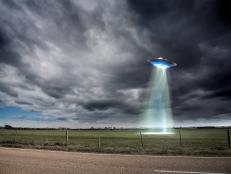National Parks: The Best Wildlife-Viewing

America's National Parks offer spectacular landscapes and varied activities for outdoor enthusiasts. But what if you want to emphasize the "wild" in wildlife? We've searched out the best national parks for viewing wildlife in its natural habitats.
Glacier National Park
West Glacier, Montana
More than 60 native species call the 2,000 square miles of Glacier National Park home. The largest are bighorn sheep, elk and the park's unofficial mascot, the grizzly bear. While the grizzly population here is one of the largest in the continental States, you may be more apt to see the snow-white mountain goats thriving along the slopes of the Continental Divide.
In addition to the grizzly bear, the park is home to the lynx -- another threatened species. The gray wolf, an endangered species, also calls this protected land home.
Glacier Park offers guided day hikes and backpacking trips lasting between one and seven days. The park urges safety first, so if you're hiking without a guide, make sure you read their safety guidelines on bear and mountain lion encounters before hitting the trails.
Olympic National Park
Port Angeles, Washington
The three different ecosystems found in Washington's Olympic National Park create a beautiful and varied habitat for a number of wildlife species. Rugged mountain ranges, rain forests and the Pacific shoreline allow park visitors to see deer, cougars, bears, raccoons, mink, dolphins, whales and sea lions. Look up, and you'll have the chance to see golden eagles and spotted owls soaring overhead.
While the park may be home to species you've never seen anywhere else, it's also home to some species that you can't see anywhere else. The Olympic marmot, the Olympic snow mole and the Olympic torrent salamander are all unique to the world's wildlife community.
Venture into the rain forest to see another prized member of Olympic's family of wildlife -- the giant slug. They come in all shapes and sizes, some up to a foot long. You won't have to be quick on your toes as the slugs move only .007 miles per hour.
There are over 600 miles of marked trails in the Olympics, making the park and its inhabitants easily accessible. Take one of the numerous guided day hikes to learn more about Olympic National Park's fascinating ecosystems and the wildlife that live there.
Isle Royale National Park
Houghton, Michigan
In the northwest corner of Lake Superior, the largest fresh water lake in the world, sits Isle Royale National Park. Forty-five miles long and only nine miles wide, the park is accessible only by boat or floatplane. In the past, the island's physical isolation and uncultivated wilderness were challenges to humans; now they provide the island's biggest attraction and a refuge for many animal species.
Isle Royale's isolated wilderness creates simple ecosystems for many creatures. As of now, there are at least 14 species of mammals that call Isle Royale home. While isolation can protect mammals from certain environmental threats and predators, the island's size can also be a prohibitive factor. For example, as recently as 1927 caribou and coyote populated the isle but now the isle is devoid of these species. Moose and wolves, which are now common sites on Isle Royale, may not be so in just a few short years. The moose strain their limited food supplies, and while their numbers hover around 450, the wolf population is now 30 and gaining.
Isle Royale is a fascinating microcosm, illustrating the delicate balance between species. Visitors to the park can explore its wilderness by canoe, kayak or one of the many guided tours. Experienced scuba divers can also explore the isle's ecosystems beneath the surface.
Everglades National Park
Homestead, Florida
Among the vast parks and ecosystems in the world, Everglades National Park stands alone. Many of the parks on this list, and across the country, were established to protect a region's natural beauty; Everglades National Park was created to preserve a fragile and unique ecosystem. The subtropical wilderness is home to many rare and endangered species and has been designated a World Heritage Site, International Biosphere Reserve and a Wetland of International Importance.
The steamy tropical world of the Everglades is home to over 700 kinds of plants and more than 300 species of birds. And, of course, the park is home to both crocodiles and alligators and it's the only place in the world where these two share the same pools.
With so much to see at Everglades, the park offers visitors a variety of tours. Shark Valley tram tours cover a 15-mile loop in the River of Grass; canoes, kayaks and bicycles rentals are available; and there are a multitude of ranger-led programs.
Glacier Bay National Park
Gustavus, Alaska
Glacier Bay National Park is 3.3 million acres of coastal rainforests and mountains surrounding a huge pristine bay. In addition to providing stunning landscapes, this park is a maritime sanctuary home to harbor seals, humpback, minke and killer whales, Dall's porpoises and sea otters.
Cruise ships and tour vessels are the most common ways to explore Glacier Bay. If you're not on a cruise ship, the tour vessels hold up to 400 passengers and are guided by a National Park Service Naturalist.
At Bartlett Cove the animals, plants and landscape are continuously changing. That's because just 200 years ago it was home to the snout of a 100-mile long glacier. You can hike the cove on your own, with a small group or as part of a guided hike.
Guided hikes are a great way to see the park's land mammals. The mountain goat, brown bear, marten, mink and lynx all populate the park's shores. Click here for a complete list of Glacier Bay's guided walks and tours.
Denali National Park
Talkeetna, Alaska
Denali National Park is huge. At 6 million acres, it's the equivalent of an area three miles wide stretching from Washington, DC, to Los Angeles. It has wonderful sightlines, and is probably one of the only parks where visitors can truly expect to see caribou, sheep, grizzly bears and wolves in a single day.
The lives of the 39 species of mammals, 167 species of birds and 10 species of fish found in the park are dictated by the seasons. Since winter is the primary season, the animals that live in the park yearlong are well-adapted to the harshness of Alaskan winters. The short spring season sees the return of 80 percent of Denali's bird population and the waking of hibernating bears. The park offers a number of different activities depending on when you're visiting and the length of your stay.
To see the park's "big five" -- moose, caribou, dall sheep, wolves and grizzly bears -- take a bus tour along the park road.
Channel Islands National Park
Ventura, California
This chain of mountainous islands off the coast of Santa Barbara, CA, known as "the Galapagos of the North," is a refuge for vulnerable sea animals and a paradise for countless species of wildlife. The one-mile stretch of water surrounding the perimeter of each island is considered part of the park and a variety of sea life is visible here.
Seals, sea lions, whales and dolphins can all be spotted in these waters. Many guided boat tours are offered throughout the park offering beautiful vistas of the islands and detailed information on the marine life populating the park's waters.
Like the aforementioned Isle Royale National Park, the island habitat on Channel Islands provides certain challenges to the park's species diversity. Channel Islands National Park supports only 4 native animals: the island fox, the island deer mouse, the harvest mouse and the spotted skunk. Both the fox and the deer mouse have evolved into separate sub-species on each island, resulting in eight unique mammal species found only on the Channel Islands.
During the summer, the park offers a unique underwater video program giving visitors a rare glimpse into the underwater environment that surrounds the park.
Yellowstone National Park
Established in 1872, Yellowstone is America's first national park. Located in Montana, Wyoming and Idaho, Yellowstone is home to Old Faithful and the Grand Canyon -- both icons of the American West. The park is also home to a variety of animals native to the Rocky Mountain region.
Chief among these animals is the bison. Where once some 50 million bison inhabited the Great Plains, today only a small number of herds exist within the United States. These herbivores are the largest mammals in Yellowstone and can be seen in both the summer and winter months. Click here to read about the bison's history at Yellowstone.
While the bison are a rare and majestic mammal, most visitors to Yellowstone come to see the bears. At Yellowstone, bears can be seen between March and November, and should be viewed from a distance as they roam freely in the park.
In addition to these 2 large mammals, Yellowstone is home to gray wolves, wolverines, lynx, elk, moose and numerous other small mammals. In order to view them safely, visitors are strongly encouraged to read the Wildlife Viewing guide before planning their trip.
Katmai National Park
King Salmon, AK
Created in 1980, Katmai National Park protects the Valley of Ten Thousand Smokes, a 40-square-mile, 100- to 700-foot-deep ash flow deposited by the Novarupta Volcano. Part volcanic moonscape, part lush emerald isle, Katmai truly is a breathtakingly beautiful American landscape.
The main attraction of Katmai Park is a spectacle you can't see anywhere else in the world; every July America's largest concentration of brown bears hunt spawning salmon. To have your visit coincide with the salmon run and bear hunt, click here for the park's guide to bear-watching.
While the brown bear may be the most famous inhabitant of Katmai, the park is home to moose, caribou, red foxes, wolves and wolverines, to name a few. Along the Alaskan coast, visitors can see sea lions, sea otters, hair seals, porpoise and beluga, killer and grey whales.
Ranger-guided activities include cultural walks, hikes and tours of the Valley of Ten Thousand Smokes. Between June and September, take part in illustrated evening talks led by park rangers at the Brook Camp Auditorium.
Grand Teton National Park
Moose, Wyoming
Grand Teton offers absolutely spectacular landscapes featuring majestic mountains, pristine lakes and, most importantly, extraordinary wildlife. Moose, the mammal most often associated with Grand Teton, can be seen peacefully grazing in the park's many meadows. Bison are also often seen populating the Grand Teton landscape.
Sixty-one species of mammals live beneath the peaks of the Teton Range and are found in each of the park's four major habitats: the alpine, coniferous forests, sagebrush flats and wetlands. Moose, elk, bison and pronghorns are commonly seen from the park's scenic roadways, however to see predatory mammals like grizzly bears, black bears, wolves and mountain lions, you'll need to hit one of the many hiking trails. Click here to view the park's complete guide to wildlife-viewing.
The park also has many snowshoeing and skiing options available during the long winter months. There's no better way to experience the park's magnificent beauty than during the quiet of a gentle winter snow.
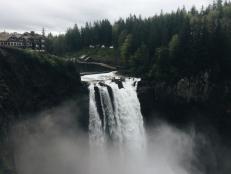
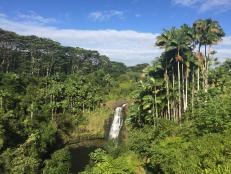
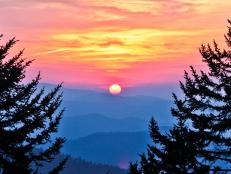
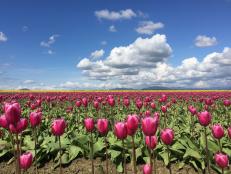
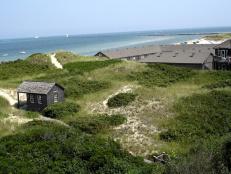
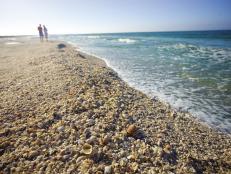













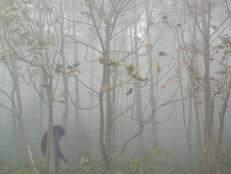






.jpg.rend.hgtvcom.231.174.suffix/1674758726773.jpeg)






